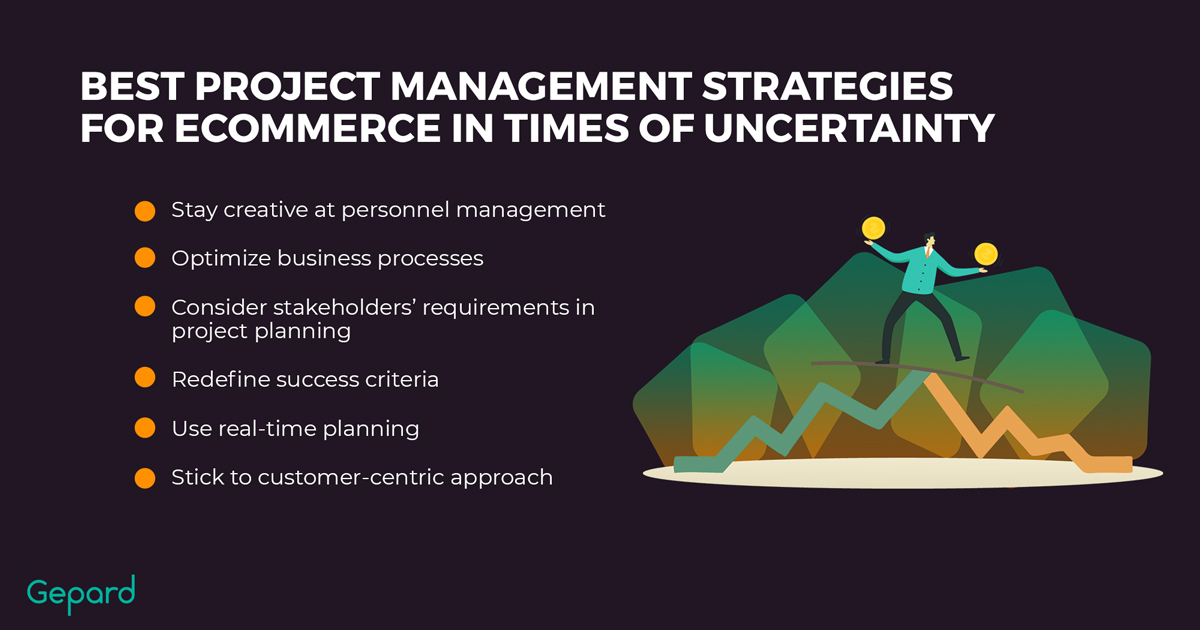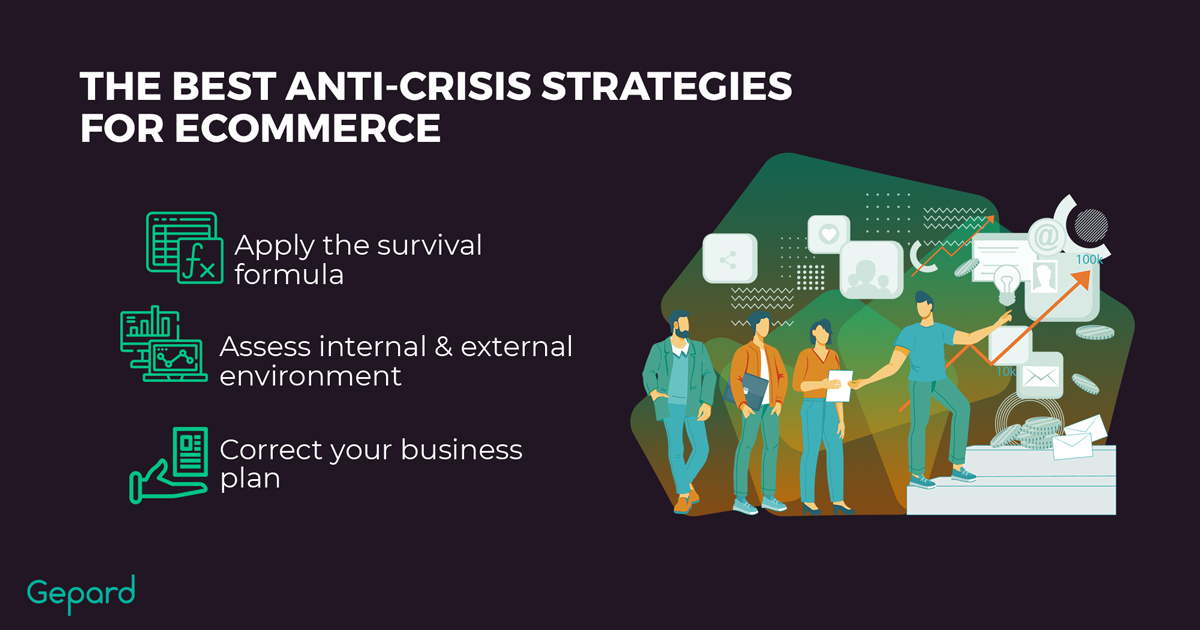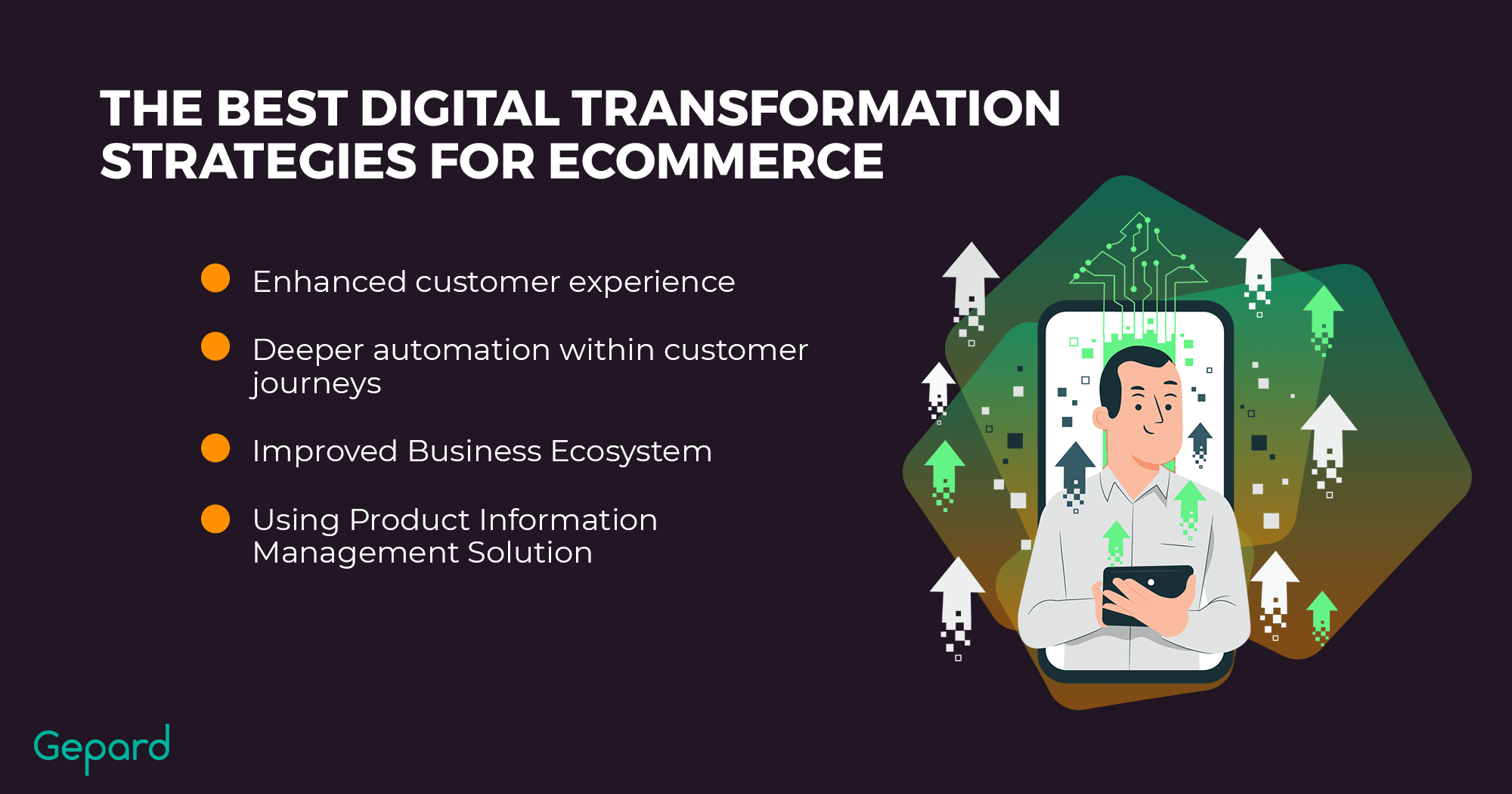The Best eCommerce Strategies In Times Of Uncertainty
Defining an eCommerce strategy is a tough row to hoe even for seasoned actors in the domain. As for budding entrepreneurs, planning an eCommerce strategy as a system of measures to promote their online store is probably the major ordeal they face at the outset of their business endeavor. The eCommerce strategy roadmap should be drawn with an eye to the current state of the realm, upcoming trends in the niche, knowledge of consumer behavior and preferences, your brand values, etc.
Outlining essential steps to get more sales and improve your position in the market is still quite a tricky undertaking when the situation in the world and in the industry is stable and predictable. Yet, such spells of calm weather are rather uncommon for the rapidly shifting environment of the early third millennium. With Black Swan and Pink Flamingo events cropping up almost every month, any long-term eCommerce planning is walking in a minefield, and shaping an eCommerce business strategy is no exception. These unforeseeable developments with global consequences present the biggest challenges for stakeholders responsible for making strategic decisions on behalf of their online venture.
What Are The TOP Challenges For eCommerce Businesses In 2022-2023?
Let’s consider the most formidable ones in detail.
Uncertainty
Ours is an extremely volatile age. Business runners are beset with numerous doubts as to the future events and trends (both in the industry and in the world at large) that may hamper any successful eCommerce strategy.
- Will the product sell D2C? When aspiring to find consumers who would buy your goods directly, you should take robust steps to attract clients and retain them, turn site traffic into real customers, foster customer loyalty, and excel at order fulfillment.
- Will the product sell to retailers? The previously mentioned measures should be supplemented by dealing with cybersecurity concerns, getting to grips with eCommerce supply chain strategy, mastering inventory management, and communicating with the extensive retailer network.
- What are the best sales channels? With the plethora of venues to sell your merchandise and methods to reach out to your clientele, you should be able to select the most effective among them. It means deciding whether you should lay your major emphasis on marketplaces of different kinds (general, auction, on-demand, unique items, etc.), social networks, classified listings websites, comparison shopping engines, or subscription box services. Or you should go for an omnichannel eCommerce strategy.
- How does customer behavior change? Consumer habits and preferences shift, and you must be able to stay in the know of the latest trends in this realm. Among the most recent ones, specialists mention demand for omnipresent communication, personalization of services, increased transparency, client anonymity, the human element in customer interaction, and the value of environmental friendliness of products.
- What strategy works after/during COVID? Our post-pandemic next normal requires a significant overhauling of successful eCommerce strategies with a greater emphasis on new product categories (groceries, home goods, fitness products), contactless payment, and coronavirus-proof delivery.
- How will geopolitical issues impact my business? With the global political landscape changing at a break-neck speed, it is hard to predict how the US-China trade and technological wars or the stability of the coalition in the German parliament will influence your organization’s future.
Inflation
Contemporary economies are rather fragile in the face of various national and international crises. The latter may bring about inflation and shifts in the currency exchange rates, which will necessitate pricing policy adjustments.
Demand Changes
The ongoing technological progress and the advent of Industry 4.0 resulted in the appearance of new demand niches and ousting of some outdated products. Who would want to buy a CD player or still less a VCR nowadays? Instead, the global clientele clamors for smartphones, wearables, and IoT-powered devices.
Other Black Swans and Pink Flamingos
What is a Black Swan event? They are unpredictable developments that have a weighty global effect. Here belong all-natural disasters that have been afflicting the planet on a large scale lately. The most ominous of them happened to be the outburst of COVID-19 that brought many offline ventures and even industries (tourist, entertainment, transport) to a standstill and gave a powerful impetus to others (IT, healthcare, eCommerce).
Pink Flamingos are the possible or ongoing events that are widely discussed by the public but are largely ignored or neglected by bureaucracy-ridden decision-makers. The brightest example of a bird of this feather is Russia’s invasion of Ukraine. While political leaders had discussed its certainty, they did little to prevent it. As a result of stringent sanctions imposed by them on Russia afterward, the global economy has undergone drastic changes, with many Western companies fleeing Russian and Belarus markets in droves and severing trade and financial ties with aggressor nations.
While these and many lesser challenges are besieging eCommerce ventures, it is mission-critical to give serious thought to how to improve your eCommerce growth strategy.
Best Project Management Strategies for eCommerce In Times Of Uncertainty
As a long-time vendor, Gepard would like to offer eCommerce best practices on augmenting your project management efficiency.
Stay Creative At Personnel Management
In an emergency, personnel management reigns supreme. To make it efficient:
- Don’t administer the team. Lead it.
- Don’t delegate decision-making to one person. Distribute responsibilities evenly across the crew.
- Don’t keep people in the dark. All stakeholders must have real-time access to the progress of the project and the requirements they are to meet.
- See to it that each team member has his task carved out for them, no matter how uncertain the situation is.
Read more about building a strong eCommerce team:
Optimize Business Processes
The technical side of the project should be left to experts. Instead, the principal task of project managers in an emergency is to make sure the employees can do their job efficiently. This includes implementing proper bug tracking systems like Jira to quickly identify and resolve technical issues. To do that well, they should gather feedback from team members and formulate clear-cut assignments for each of them.
Consider Stakeholders’ Requirements in Project Planning
The project manager’s overarching goal is to map out the work to be a perfect fit for all stakeholders. Thus, instead of actually planning the project, the PM acts rather as a planning process facilitator who aims to bring all the participants into accordance that would satisfy everyone. Leveraging reliable resources for PM professionals can support project managers in guiding this collaborative process effectively.
Redefine Success Criteria
Projects in emergency tend to have vague eCommerce goals. Try to make them more palpable for the staff to see where they are going. For instance:
- Keeping stakeholders satisfied;
- Keeping team members satisfied;
- Meeting functional requirements;
- Delivering the product within time and budget;
- Adding more value than was initially intended;
- Guaranteeing high quality.
Use Real-Time Planning
Since the future is far from certain, plan only for a short time ahead. Moreover, all changes, risks, goals, benefits, and project scope should be identified and reconsidered daily to keep abreast with the current situation.
Stick to Customer-Centric Approach
At the end of the day, what really matters in times of uncertainty is customer satisfaction. To provide it, the project manager should canvass their opinion as to each element of the product and react to this feedback immediately. Only in this way can you ensure it adds value to the end product.
All these tips can be instrumental when you start to plan an eCommerce strategy for your company.

Top Stats That Will Help To Build A Powerful eCommerce Strategy
- 73% of consumers are willing to try new digital purchasing options, such as social commerce, voice-activated shopping, and augmented reality. (Source: Salesforce)
- Retail mCommerce sales are expected to account for 43.4% of total retail eCommerce sales in 2023, up from 41.8% in 2022. (Source: eMarketer)
- 78% of consumers in the United States have made an online purchase in the past month. (Source: Shopify)
- The top priority for eCommerce businesses in 2022 was to improve their customer experience. (Source: Forrester)
- The average conversion rate for eCommerce websites in the US in 2022 is 2.5%, in the UK – 4.1%, in EMEA – 1.6%, and in Other Regions – 1.2%. (Source: Statista)
- 50% of consumers said free shipping would encourage them to complete a purchase. (Source: DataReport)
- 47% of worldwide digital sales came from marketplaces in 2022. (Source: Statista)
- 73% of consumers in the United States are more likely to make a purchase if the product description includes a video. (Source: WyzOwl)
- Online retailers can expect to see a 28% increase in revenue per visitor from personalized experiences. (Source: Adobe)
- 57% of consumers in the United States expect to receive personalized recommendations when shopping online. (Source: Salesforce)
The Best Strategies For eCommerce During Recession
To keep your venture afloat in times of trouble, it is vital to follow the three-step algorithm for building an eCommerce strategy, as suggested by experts.
Step 1. Apply the Survival Formula
There are three pivotal summands of survival in precarious conditions: the speed of your understanding of the situation, the magnitude of crucial choices you make, and the amount of time you use to implement those changes. Evidently, the sooner you react to challenges (given your reaction is up to the mark), the greater your chances for survival are.
Step 2. Assess Internal & External Environment
In identifying your current state to draw the eCommerce strategy, you must take into account both external factors (state of the economy, unemployment rate, condition of the industry/niche, availability of new markets, validity of the investor roster) and internal assets of the company (payroll expenditures, payable and receivable accounts, liquidity, sales pipeline, eCommerce marketing strategy, and necessary spendings on it, etc.).
Step 3. Correct Your Business Plan
As soon as you know what you have, you should introduce changes to your current business plan. Determine the areas which should be financed no matter what and those where you can cut down on expenses. Invite all employees to share the collective wisdom of the organization in offering their ideas as to the correction of the operating plan and envisioning the recovery scheme. And don’t forget that the new strategy isn’t a fixed scenario either. It should be revised every now and then to accommodate the new developments that keep emerging.
In the age of across-the-board digitalization, all your plans of reforming your business policies are doomed to defeat unless you come up with the eCommerce digital strategy for your venture.

The Best Digital Transformation Strategies For eCommerce
State-of-the-art business tools pave the way for efficient crisis-combating measures as a part of an eCommerce strategy. Leveraging them ushers the following perks.
Enhanced Customer Experience
As the previous hard-time spells manifest, companies that prioritize customer experience witness three times higher returns than those that neglected this aspect. So when uncertain times are in the offing, you should try to oblige your clientele more than ever by providing an in-store experience across multiple digital channels, ensuring vibrant connection with customers, and personalizing your interaction efforts via high-tech means.
Read more about improving your product experience with the help of PIM solution:
Deeper Automation Within Customer Journeys’
Modern AI-powered solutions enable profound automation of customer service by taking care of delivery updates, refunds, exchanges, sizing inquiries, and “where is my order” kind of questions. These conversation process automation tools free your personnel to pursue more creative or sophisticated activities instead of answering a string of standard questions.
Improved Business Ecosystem
Automation ushered by specialized software benefits the internal workflow of the company as well. Its supply chain management, inventory tracking, and order fulfillment can be remarkably facilitated and streamlined, which spells greater efficiency for the company in general.
Among the plethora of professional eCommerce solutions, PIM software occupies a prominent place.

PIM Software: A Must For eCommerce Business Ecosystem Boost
Online businesses that operate across multiple countries oftentimes find it hard to reconcile their product information with the requirements each retailer forwards and have it available in various languages. Product Information Management solution (PIM for short) is called to handle such issues, acting as a centralized catalog that assembles, amplifies, manages, stores, and distributes product data throughout a multitude of sales channels. Moreover, not only the company’s personnel but also their numerous partners and other data owners can obtain access to it.
Since the solution plays well with sales platforms of different kinds, it can dispatch product information to an entire range of marketplaces, adjusting it to their norms. Besides, the data is updated in real-time, thus ruling out any errors, inconsistencies, and inaccuracies. Information enrichment is a breeze because of the high degree of automation of the data processing pipeline.
By introducing PIM into their daily workflow, eCommerce ventures minimize wearisome manual and redundant data handling procedures, reduce time-to-market delays, cut down on data management expenditures, and improve customer experience.
How Gepard PIM have boosted Lazada eCommerce strategy?
eCommerce Strategy FAQ
What Are A Long Tail eCommerce Business Strategies?
This approach focuses on selling small quantities of hard-to-find products to a large number of consumers instead of targeting narrow audiences who can buy a lot of popular items. The advocates of this strategy claim that it increases the profitability of the business because, in the age of standardization and uniformity, many modern consumers tend to veer from mass-market eCommerce trends and go for unique products.
How To Improve eCommerce Strategy?
One of the best eCommerce tactics for building a strategy is to be flexible. Online venture owners should optimize their business processes, monitor market conditions in real-time, onboard a consumer-centered approach, and adjust eCommerce success criteria to the imperatives of the next normal.
Preparing For Uncertainty
In the times when global uncertainty pervades multiple sectors of the economy, it is mission-critical for eCommerce future to be on the alert for some kinds of “birds.” First of all, they should watch for potential Pink Flamingo events and take steps to minimize their effect on business. Besides, they should have an emergency business strategy prepared in case any Black Swans loom on the horizon.
Leveraging the Gepard PIM solution is an integral part of your eCommerce strategy in both cases since it facilitates and streamlines the routine shop floor operations related to product information processing and enhances the overall efficiency of your company. By contacting us, you can receive a guided demo that will showcase its benefits and help you realize the growth opportunities it opens for your eCommerce business development.








